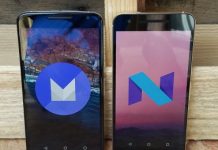Though Google has been tight lipped about the announcement of its next mobile OS, a lot has been already said and written about Android M. With just a couple of days to go before Google finally announces Android M, here’s what we know so far.
Name
It’s quite possible that Google may simply announce its next iteration of the mobile OS as Android M and let the guessing game continue, just like last year. The final version of Android M is reportedly scheduled for August, and could get a name only when it is launched along side the upcoming Nexus devices in September-October. For now, it is internally called Macadamia Nut Cookie or MNC. Many have already taken to Twitter voicing their favourite names like Mud pie, Muffin and so on, but some reports have been betting on Marshmallows.
Battery and RAM
Battery life is one area that Google has been receiving flak and needs to improve. The most recent report reveals that Google has asked its Android team to improve battery life and cut down on the RAM usage. It wants the team to reduce location checking when not required. With these new changes, Google may fix issues such as battery drain due to Play services.
Fingerprint authentication
Android M may include native fingerprint authentication, which is currently seen on a few Android smartphones such as Samsung Galaxy S6, Galaxy S6 Edge, HTC One M9 as well on iOS devices such as iPhone 5S, iPhone 6, iPhone 6 Plus, iPad mini 3, and iPad Air 2. The new functionality will allow users to log in to all of the supported applications on their Android devices without entering a password. Some Android phones in the past have had fingerprint readers, but those were ‘OEM-created solutions’, which means that the fingerprint-scanner feature was created by the smartphone company itself. Google was working on a setup and enrollment process, fingerprint lock screen and “service to manage multiple clients that want to access the fingerprint HAL API”.
More privacy controls
The new iteration of Android will reportedly offer users more detailed choices over what data apps can access such as photos, contacts, and location data. This move closely follows Apple that recently added similar security features. A ZDNet report adds that ‘the change would give a user more granular controls over their data and how it’s used, adding that the option has been present in the past — albeit hidden for developers’ use only’.
Home automation
With Android M, Google may further push its online services into your homes. We’ve been hearing about Google’s new technology called Brillo that is expected to run on low-powered devices independent of Nest using as little as 64MB or 32MB of memory. This means any appliance around the home—the lights, the air conditioner, the security camera and so on—could be running Brillo and connected to the Web, allowing you to control them remotely via a smartphone/PC. This way, Google will be able to provide a backbone for tomorrow’s smart homes.
Virtual Reality
Google is also rumoured to push Android deeper into the virtual reality space. It is believed to be working on a VR version of Android. “It’s less clear what that would look like. Google could surprise us with an entirely new virtual reality headset, or even a revived, VR version of Google Glass. The company said in January it was closing the Explorer program for Glass to focus on developing a new version of the products,” reports PCWorld.













